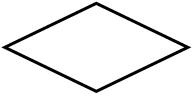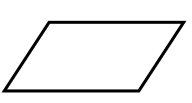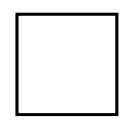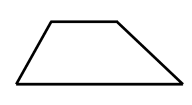Or search by topic
Number and algebra
Geometry and measure
Probability and statistics
Working mathematically
Advanced mathematics
For younger learners
Guess my Quad



Here is a game you could play with a friend...
Ask your friend to choose one of the shapes, and then try to identify which it is.
Your friend can only reply "Yes" or "No" to your questions.
Then swap over.
Who can identify the other's shape with the fewest questions?
 |
 |
 |
 |
| Isosceles trapezium |
Rectangle |
Rhombus |
Kite |
 |
 |
 |
 |
| Parallelogram | Square | Trapezium | Arrowhead |
You may wish to print out this sheet to record the answers and help you eliminate possible shapes.
Here are some questions you might like to consider:
How many questions do you need to ask to guarantee you know your friend's shape?
What would you ask first?
If your friend says "Yes", what would you ask next?
If your friend says "No", what would you ask next?
Charlie says he can always identify Alison's shape after asking just three questions.
Which question might Charlie ask first? Which follow-up questions might he then ask?
Can you invent a game with more shapes, where you can always identify your friend's shape in four questions? What is the maximum number of shapes you could have in such a game?
With thanks to Don Steward, whose ideas formed the basis of this problem.
You may also like
Linkage
Four rods, two of length a and two of length b, are linked to form a kite. The linkage is moveable so that the angles change. What is the maximum area of the kite?
Making Rectangles, Making Squares
How many differently shaped rectangles can you build using these equilateral and isosceles triangles? Can you make a square?
The Cyclic Quadrilateral
This gives a short summary of the properties and theorems of cyclic quadrilaterals and links to some practical examples to be found elsewhere on the site.

